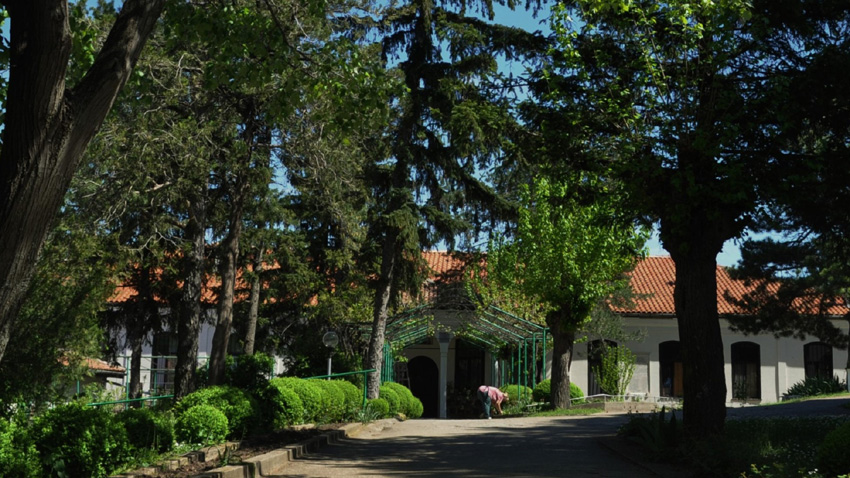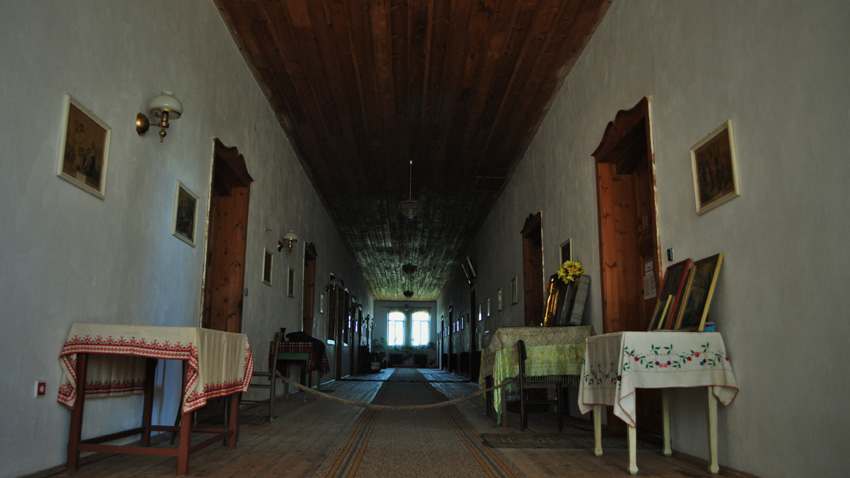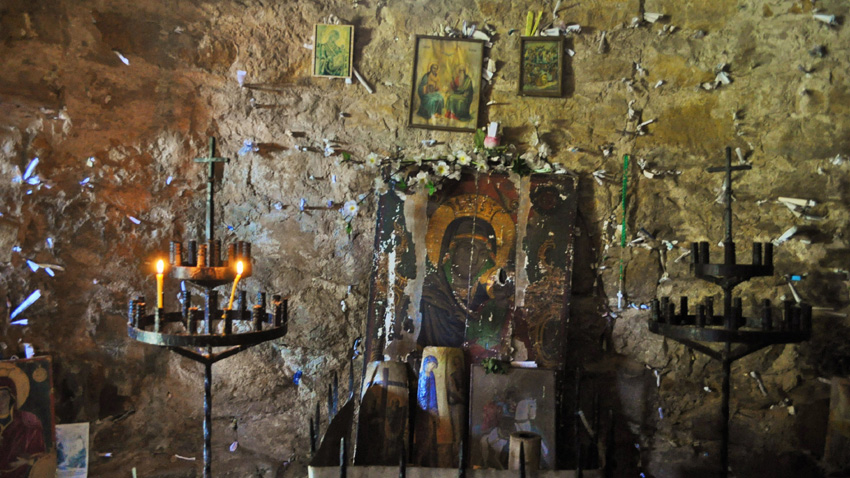Rising above the summit of the Arbanasi plateau, the belfry of the Sts. Peter and Paul monastery is an arresting sight from afar. The bell toll can be heard as far as the town of Lyaskovets, famed for its wine cellar and gardening traditions - once a lucrative occupation here. Veliko Turnovo is just six kilometers away - it is with the history of the old Bulgarian capital that its fate is allied.
The cloister - the Sts. Peter and Paul monastery, also known as the Lyaskovets monastery - was founded by boyars from Turnovo. It has gone through many trials and tribulations - it has been raided by enemies, set fire to, has suffered earthquakes and been used for unwonted purposes in the time of totalitarianism, nonetheless it has survived down to our day and continues to attract believers from all parts of the country. The fortunes of the Bulgarian state may well have been decided there:

“According to most sources it was founded in the 12th century on the spot where there once stood a 2nd century Roman fortress,” says Sofia Bozhkova from the Tsarevgrad Turnov municipal tourist centre. “The fortress was the place where followers of the Turnovo boyars the brothers Asen and Peter would meet. Asen and Peter organized an uprising against Byzantine rule. When the uprising succeeded a monastery was founded on the same spot.”
As Bulgaria fell under Ottoman domination almost two centuries later, the Sts. Peter and Paul monastery was looted and plundered and set fire to many times by the oppressors. But each time it was raided it would rise from the ashes thanks to the efforts of the local population. For a long time the monastery was governed by a Greek bishop as the Turnovo diocese was subordinated to the Greek Patriarchate of Constantinople. The Greeks chased out the Bulgarian monks and replaced them with Greek clerics. It was only in 1870 with the proclamation of the independence of the Bulgarian church that the monks could return to the monastery.

“It was a place that brought together people connected with the 17th-18th century struggles for national liberation from Ottoman domination in the region of Veliko Turnovo,” Sofia Bozhkova says further. “At the time our monasteries were sheltered, built in remote places, far from the eyes of the Turks. They were a hub of education, a place where the Bulgarian spirit could live on. During the National Revival period, the Sts. Peter and Paul monastery was at the heart of the national liberation struggle, here the revolutionary committees discussed their work.”
The first seminary in the country opened doors in the monastery in the 1870s but a little after the country's liberation from Ottoman rule in 1878, it was closed and turned into… an insane asylum. In 1913 calamity struck once again - a disastrous earthquake razed everything to the ground, save for just a few buildings. It was later restored and turned into a convent. The cloister has also given shelter to girls who are deaf and dumb, a church singing school and in the years of totalitarian rule, it was used to intern what were termed “loose women” from Sofia. It was fully reconstructed in the 1960s. At the moment there are three nuns living here and a novice. The church has been restored but there is no trace of the old frescoes. The belfry, more than 30 meters high collapsed during the earthquake and was restored in 1980; the clock was donated by a patriotically minded woman from Lyaskovets who lives abroad.

To step over the threshold of the Holy Trinity chapel is to be transported to a place where time does not exist. In the semidarkness the candle flames flicker, casting fleeting shadows on the walls, shadows from other worlds and other times. The chapel is said to have been built on the spot where there once was a pagan altar, later turned into a small church. It was here that Asen and Peter of Turnovo vowed to free their people from the Byzantine invaders and then to erect a monastery nearby to celebrate liberty. That is just what happened. That is why it is said that if you write down your wish on a piece of paper and squeeze it into one of the cracks between the rough-hewn stones, it shall come true. So, hundreds of people have covered the chapel walls with their hopes and dreams. “No sword or bondage, nor fire or earthquake shall touch me. I have been and am the spirit and stronghold for Christians.” These words inscribed in the monastery are something visitors are not likely to ever forget.
English version: Milena Daynova
His Holiness Daniil, Patriarch of Bulgaria and Metropolitan of Sofia, addressed the Orthodox Christians on the eve of the bright Nativity of Christ (Christmas Eve). "Silent in prayer, gathered around the warm hearth, we await the fulfilment of what was..
In anticipation of the Nativity of Christ, the Orthodox Church opens its doors for today's divine services, heralding the fulfillment of the mystery of the Incarnation. "Let us experience the Nativity of Christ during the solemn services, so..
Christmas Eve is one of those quiet family holidays, filled with hope for the future. At the border between the past and the present, Orthodox Bulgarians gather to welcome the days to come. Traditionally, the table on Christmas Eve is simple and..
At sunset on December 25, the Jewish community begins to celebrate Hanukkah. The holiday begins on the 25th day of the Jewish month of Kislev in the..
The Bulgarian Orthodox Church celebrates Christmas with solemn services. The festive services began on Christmas Eve, when the church held a solemn..
This year, the holiday of Christmas for the Bulgarian Eastern Orthodox Diocese in the United States, Canada and Australia is especially exciting!..

+359 2 9336 661
